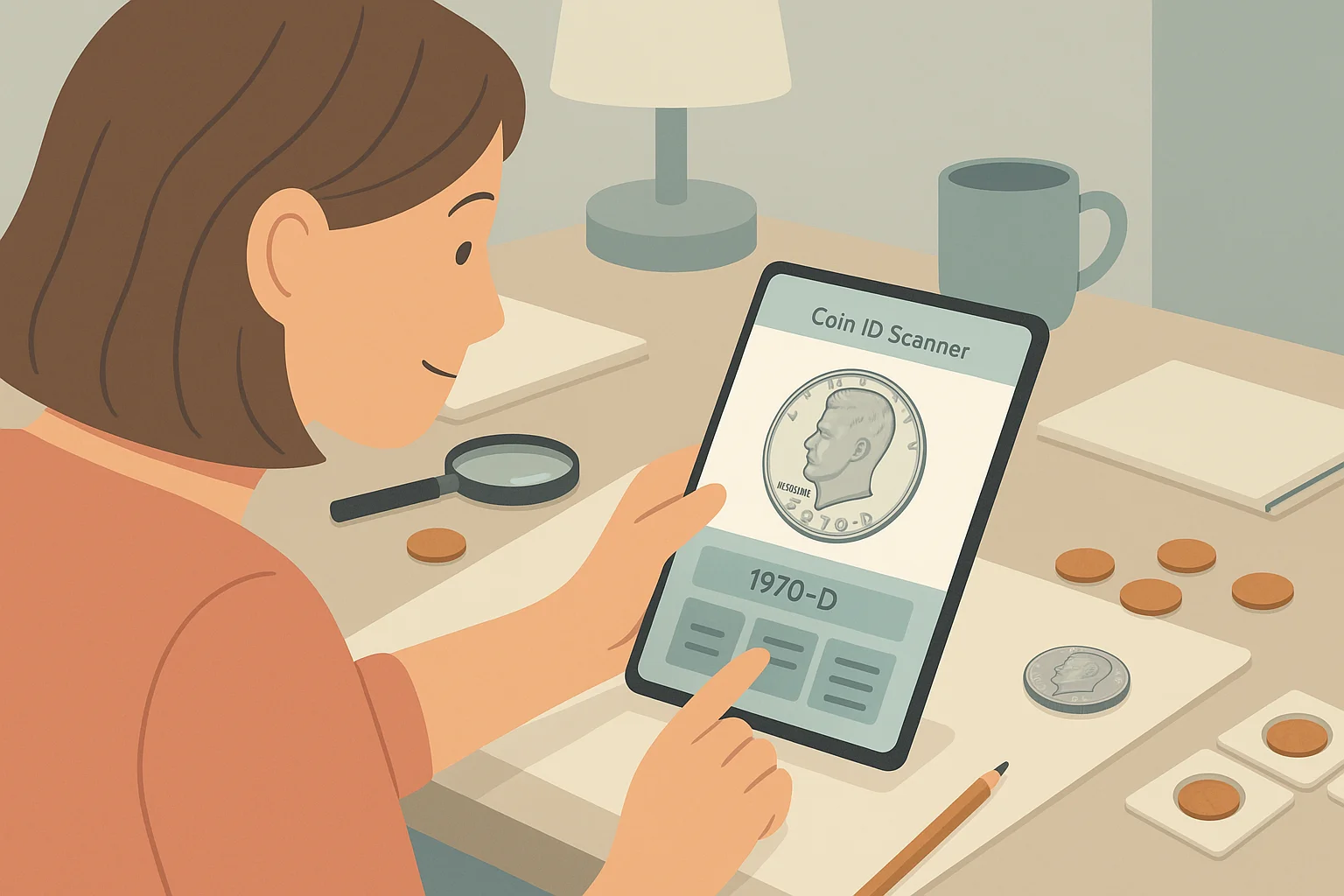From silver-rich classics to modern copper-nickel issues, the half dollar series offers accessibility, beauty, and investment potential. For those beginning their collecting journey, focusing on five essential issues provides the perfect foundation — beauty, affordability, and numismatical appreciation of the 1971 half dollar value.

1. The 1971 Kennedy Half Dollar — The Modern Classic
The 1971 Kennedy half dollar represents the end of silver’s dominance in circulating American coinage. After the Coinage Act of 1965, silver content in half dollars was gradually reduced, and by 1971, it was completely replaced by a copper-nickel clad composition. This change reflected the rising cost of silver and shifting economic realities of the time.
While the 1971 issue is one of the most common in the Kennedy series, it holds enormous historical value. It symbolizes America’s departure from precious-metal coinage and remains a collectible milestone for new numismatists.
Specifications:
| Feature | Details |
| Composition | Copper-nickel clad (outer layers of 75% copper, 25% nickel) |
| Diameter | 30.6 mm |
| Weight | 11.34 g |
| Edge | Reeded |
| Mint Marks | Philadelphia (no mark), Denver (D), San Francisco (S for proofs) |
Special Mint Sets (SMS) and proof coins from San Francisco with a 40% silver clad composition are especially popular among collectors. High-grade uncirculated examples graded MS65 or higher can sell for $50–$300, while proof versions may exceed $400, depending on condition and cameo contrast.
2. The 1964 Kennedy Half Dollar — The Last 90% Silver
The 1964 Kennedy half dollar is a cornerstone of 20th-century U.S. coinage. Minted shortly after President John F. Kennedy’s assassination, it became an immediate symbol of national remembrance and unity. It was also the last half dollar composed of 90% silver, marking the end of an era for American circulating coinage.
Key Details:
- Composition: 90% silver, 10% copper
- Silver Weight: 0.3617 troy ounces
- Mints: Philadelphia (no mint mark) and Denver (D)
The 1964 Kennedy half dollar remains one of the most accessible silver coins for beginners — in circulated condition, these coins are often worth around $10–$15, but prices climb quickly for uncirculated examples. High-grade mint state (MS66+) and proof coins can fetch $200–$500, while exceptionally toned or cameo proofs often reach even higher values.
3. The Walking Liberty Half Dollar (1916–1947) — Art in Motion
Among all American coin designs, few match the elegance of the Walking Liberty half dollar. This coin depicts Lady Liberty striding toward the rising sun, draped in the American flag — a symbol of progress and hope after World War I.
The reverse features a majestic bald eagle perched on a mountain pine branch. Both sides are celebrated as artistic masterpieces, inspiring later designs like the American Silver Eagle bullion coin introduced in 1986.
Specifications:
| Feature | Details |
| Composition | 90% silver, 10% copper |
| Weight | 12.5 g |
| Diameter | 30.6 mm |
| Mint Marks | Philadelphia, Denver (D), San Francisco (S) |
While common dates (like 1941–1947) are affordable at $20–$40 in circulated grades, key dates such as 1916-S or 1921-D can reach thousands in Mint State.
4. The Franklin Half Dollar (1948–1963) — A Tribute to Innovation
The Franklin half dollar stands out in U.S. numismatic history for its clean, modern aesthetic and its tribute to one of America’s greatest minds — Benjamin Franklin. This coin replaced the Walking Liberty half in 1948 and ran until 1963, when the Kennedy design was introduced following President Kennedy’s death.
The obverse features Franklin’s profile with simple yet elegant inscriptions, while the reverse shows the Liberty Bell, complete with its iconic crack, and a small eagle beside it — fulfilling legal requirements for heraldic imagery.
Specifications:
| Feature | Details |
| Composition | 90% silver, 10% copper |
| Weight | 12.5 g |
| Diameter | 30.6 mm |
| Edge | Reeded |
| Mints | Philadelphia (no mint mark), Denver (D), San Francisco (S) |
The Franklin series is rich with collectible nuances. For example, coins with full bell lines (FBL) — showing complete, uninterrupted detail across the Liberty Bell’s lower lines — are highly desirable and command significant premiums.
5. The 1970-D Kennedy Half Dollar — A Modern Rarity
Many post-1970 half dollars are plentiful, but the 1970-D Kennedy half dollar was released in a surprisingly small quantity. Struck exclusively for mint sets and never released for general circulation, it remains one of the lowest-mintage modern issues of the entire Kennedy series.
Mintage: Only 2.15 million coins were struck at the Denver Mint — a tiny fraction compared to tens of millions for other years.
This issue retained a 40% silver composition, making it both a collectible and an investment-grade coin. It’s often found preserved in original U.S. Mint packaging, though locating one in pristine condition can still be a challenge.
Key Specifications:
| Feature | Details |
| Composition | 40% silver, 60% copper |
| Silver Weight | 0.1479 troy ounces |
| Diameter | 30.6 mm |
| Edge | Reeded |
Because it never entered circulation, this coin becomes a perfect example of how a relatively recent coin can still hold rarity, silver value, and strong collector interest. Take a look at it if you want to enter modern numismatics specifically.

How to Identify, Authenticate, and Manage Your Half Dollar Collection
Building a half dollar collection is a balance between study and strategy. With just a few tools and the right approach, beginners can develop a confident eye for identifying details and tracking market value.
Step 1: Examine Mint Marks and Design Details
Every half dollar carries small yet vital indicators of where and how it was minted. For instance:
- Philadelphia coins traditionally have no mint mark.
- Denver issues feature a bold “D” to the left of the eagle or beneath Kennedy’s bust.
- San Francisco coins bear an “S” and are often proofs or special mint issues.
Use a 10x magnifying glass or jeweler’s loupe to inspect surfaces, especially for faint marks or varieties. Details like the sharpness of Kennedy’s hairlines or the definition of the Liberty Bell can distinguish a $15 coin from one worth hundreds.
Step 2: Understand Coin Grading Basics
Half dollar values rise sharply with condition, making grading one of the collector’s most useful skills. Start by learning to recognize key grading levels:
| Grade | Description | Typical Market Impact |
| Fine (F12) | Light wear on major details | Minor premium |
| Extremely Fine (XF40) | Minimal wear, good luster | Moderate value |
| Mint State (MS60–MS65) | No wear, few marks | Collector-grade value |
| Proof / Cameo Proof | Mirror-like strike | High collector interest |
Coins with strong original luster or Full Bell Lines (for Franklins) earn significant premiums. Submitting rare or high-value coins to PCGS or NGC for certification ensures authenticity and adds resale credibility.
Step 3: Spotting Varieties and Errors
Some of the most valuable half dollars aren’t rare by mintage but by minting mistake. These varieties add excitement and reward patience in observation.
Watch for:
- Doubled Dies: Common in early Kennedy and Franklin halves; letters show visible doubling.
- Proof Errors: Occasional contrast mismatches or missing frosting on cameo proofs.
- Planchet Flaws: Missing edges, clipped rims, or lamination cracks.
- Repunched Mint Marks: Especially found on Denver coins before the 1980s.
Step 4: Use Technology to Simplify the Process
For beginners, technology makes professional grading closer. The Coin ID Scanner app makes identifying and managing your half dollars quick and reliable.
Key features include:
- Photo Recognition: Snap a coin photo for instant identification, including year, mint, and composition.
- Detailed Coin Profiles: Access verified information such as edge type, weight, and current price range.
- Digital Collection Tracking: Save and categorize coins with photos and notes.
- Smart Filters and AI Coin Helper: Premium tools that highlight potential mint errors or rare varieties.
- Database Access: Over 187,000 coins available globally for comparison.
By combining manual observation with digital verification, collectors gain precision and peace of mind when evaluating silver content or potential counterfeit risks.
Start Small, Grow Wisely
Starting with these five issues gives beginners a balanced mix of accessibility, silver value, and collectible depth. Over time, your collection will evolve from casual discovery into a portfolio of history in your hands.
And with the Coin ID Scanner app as your digital companion, identifying, valuing, and managing your half dollars becomes not only simple but deeply rewarding — the perfect combination of tradition and technology for the modern collector.



